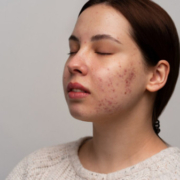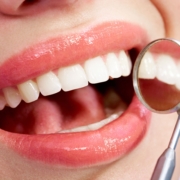Comprehensive Guide to Occupational Therapy Services in Fresno
Occupational therapy is a vital part of healthcare, designed to help individuals overcome physical, cognitive, or emotional challenges that interfere with daily living. In Fresno, occupational therapy services have become essential for people of all ages who want to regain independence and improve their quality of life. From children with developmental delays to seniors facing age-related difficulties, occupational therapy provides customized solutions that make everyday tasks more manageable.
Understanding Occupational Therapy
Occupational therapy (OT) is a patient-centered approach that helps people participate in the activities that matter most to them—whether at home, school, or work. Unlike physical therapy, which focuses mainly on movement and strength, occupational therapy emphasizes functional skills and adaptation. Therapists in Fresno work with patients to develop strategies, introduce assistive devices, and provide training that allows them to perform tasks safely and independently.
Who Can Benefit from Occupational Therapy in Fresno?
Occupational therapy is not limited to any specific age group or condition. It serves a wide range of individuals, including:
- Children with autism, ADHD, or developmental delays.
- Adults recovering from surgery, accidents, or injuries.
- Seniors dealing with arthritis, memory loss, or mobility issues.
- Individuals with chronic conditions like stroke, multiple sclerosis, or Parkinson’s disease.
By addressing the unique needs of each person, occupational therapy in Fresno ensures that patients can continue to enjoy meaningful daily activities.
Pediatric Occupational Therapy Services
Children often face developmental challenges that impact school performance, coordination, or social skills. Pediatric occupational therapy in Fresno focuses on building fine motor skills, improving sensory integration, and encouraging independence. For example, therapists may work with a child to improve handwriting, develop self-care routines, or build better social interactions with peers. Early intervention ensures children have the tools to succeed both academically and socially.
Occupational Therapy for Adults
Adults often require occupational therapy to recover from injuries or illnesses. Whether it’s regaining strength after surgery, learning new techniques after a stroke, or adapting to chronic pain, occupational therapy provides practical solutions. Therapists in Fresno design individualized programs that help patients return to work, manage household responsibilities, and maintain social connections with confidence.
Senior Care and Occupational Therapy
Aging can present physical and cognitive challenges that make daily life more difficult. Occupational therapy in Fresno helps seniors maintain independence by focusing on fall prevention, mobility improvement, and cognitive exercises. Therapists often recommend home modifications and adaptive equipment, ensuring older adults can continue to live safely and comfortably in their own homes.
Rehabilitation Through Occupational Therapy
Recovery after a serious health event such as a stroke or traumatic injury can be overwhelming. Occupational therapy plays a critical role in rehabilitation by guiding patients through skill-building exercises and adaptive techniques. Fresno occupational therapists help patients regain confidence and independence, preparing them to return to work, school, or their community with improved functionality.
Home-Based Occupational Therapy
For individuals who cannot travel to a clinic, home-based occupational therapy is an excellent option. This service allows therapists to visit patients directly in their homes, where they can provide care in familiar surroundings. Home-based care also enables patients to practice real-life activities, such as cooking meals or bathing safely. To explore more about these services, visit California Home Health Care for information on occupational therapy at home in Fresno.
Common Techniques Used in Occupational Therapy
Occupational therapists use a wide range of techniques and strategies, depending on each patient’s needs. These may include:
- Fine motor training to improve hand and finger skills.
- Cognitive therapy for memory, attention, and problem-solving.
- Adaptive equipment training for easier daily living.
- Energy conservation strategies for managing fatigue.
- Pain management techniques for chronic conditions.
These evidence-based practices ensure that patients in Fresno receive the highest level of personalized care.
The Role of Families and Caregivers
Occupational therapy success often depends on the involvement of families and caregivers. Therapists in Fresno include caregivers in the treatment process, teaching them safe and effective ways to support patients at home. This collaboration creates a stronger foundation for long-term progress and helps families feel empowered in the recovery journey.
Choosing Occupational Therapy Services in Fresno
Selecting the right occupational therapist is an important step. Look for licensed professionals who have experience working with patients in your specific situation. Whether you need pediatric care, adult rehabilitation, or senior support, Fresno offers a variety of therapy options to meet your needs. Many home health agencies provide customized therapy plans to make care more accessible and effective.
Final Thoughts
Occupational therapy in Fresno is an essential service that helps people of all ages overcome challenges, achieve independence, and enjoy a higher quality of life. With specialized programs for children, adults, and seniors, occupational therapy provides practical solutions for everyday living. By seeking professional occupational therapy services, patients can regain the confidence and ability to participate fully in the activities that matter most.











